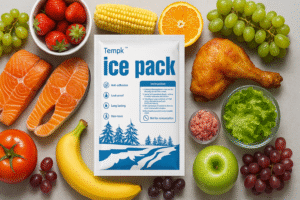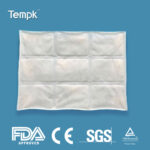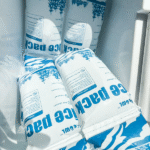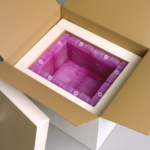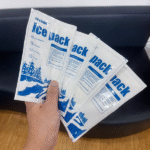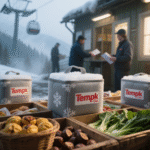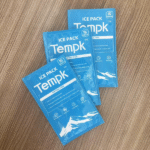How Does a Dry Ice Pack Keep Your Shipment Frozen in 2025?
Dry ice packs combine ‑78 °C carbon‑dioxide solids with vented packaging to lock cargo below ‑20 °C for 48 hours or more. Today’s global dry‑ice market is forecast to hit US $2.79 billion by 2032, driven by booming biotech and grocery delivery . If you ship temperature‑sensitive goods, understanding these packs saves money, reduces spoilage, and keeps you compliant.
-
What exactly is a dry ice pack and how does it work?
-
Which 2025 regulations govern dry ice shipping?
-
How do you choose, pack, and dispose of dry ice safely?
-
What market trends will shape dry ice logistics this year?
What Is a Dry Ice Pack & Why Does It Outperform Gel Packs?
A dry ice pack is a vented, insulated pouch or brick filled with solid CO₂ at –78 °C that sublimates directly to gas. It absorbs 2–3 × more heat per gram than water‑based gel, keeping samples or frozen meals rock‑solid far longer.
Dry ice works like a pressure‑release freezer: as it warms, it turns to gas, pulling heat away from the load. Vented film and reinforced corrugate prevent pressure build‑up. You get stable, sub‑zero temps for 24–72 hours without messy meltwater. Ideal for biologics, seafood, or gourmet desserts in long‑haul lanes.
Energy Capacity vs. Gel
| Cooling Source | Latent Heat (kJ /kg) | Temp Plateau | What It Means for You |
|---|---|---|---|
| Dry Ice Pack | ~571 | –78 °C | Longest hold time; ships frozen goods across continents |
| Gel Ice Pack | ~334 | 0 °C | Good for chilled (2–8 °C) but fails for deep‑frozen cargo |
| PCM 15 °C Pack | ~200 | 15 °C | Best for insulin or chocolate; not cold enough for ice‑cream |
Practical Tips
-
Overnight e‑commerce: Use 2 kg of dry ice per 5 kg load for 24‑hour door‑to‑door lanes.
-
Trans‑pacific airfreight: Add 30 % extra ice and place packs on top of payload—cold sinks downward.
-
Last‑mile grocery: Swap to gel packs when products need only 0–4 °C to avoid over‑freezing leafy greens.
Real‑World Case: A biotech firm cut spoilage by 75 % after switching from gel to dry ice packs for antibody kits shipped from San Diego to Berlin in midsummer.
Which 2025 Rules Control Dry Ice Pack Shipping?
IATA DGR 66 (2025) classifies dry ice as UN 1845, Class 9. Shippers must declare net weight and use a vented package checklist . Packages on passenger aircraft may not exceed 2.5 kg per piece or 200 kg per flight. The U.S. DOT echoes these limits and mandates Class 9 labels plus “Carbon Dioxide, Solid” wording
Key Compliance Steps
-
Use UN‑tested fiberboard or molded coolers with relief vents.
-
List net dry‑ice weight on air waybill and outer box.
-
Leave void space for gas escape; never hermetically seal
-
Train staff on CO₂ exposure limits (<5,000 ppm 8‑h TWA).
How to Pack a Dry Ice Shipment Like a Pro
Follow the 3‑layer rule: primary bag → secondary liner → sturdy outer box. Keep product centered with spacers to prevent thermal bridges. For 48‑h frozen transport at –20 °C ambient, allocate roughly 1.5 kg dry ice per 1 kg product.
Quick Packing Checklist
-
Pre‑cool goods to –20 °C.
-
Insert insulated delivery bag (see our thermal‑bag guide) as inner liner.
-
Add dry ice bricks on top and sides.
-
Seal voids with kraft paper—not bubble wrap, which traps CO₂.
-
Attach Class 9 label and “UN 1845” sheet.
2025 Trends: Where Are Dry Ice Packs Heading?
The cold‑chain logistics market will soar from US $436 billion in 2025 to US $1.36 trillion. Expect lighter, molded‑fiber containers and CO₂ capture tech that recycles sublimated gas back into pellets onsite. AI route planners cut transit by 12 %, reducing dry‑ice consumption per kilo shipped.
Trend Snapshot
-
Lightweight fiber coolers: Slash fuel burn and emissions.
-
Closed‑loop CO₂ systems: Capture vented gas for reuse; pilots underway at major hubs.
-
Hybrid packs: Dry ice plus PCM sleeves extend hold time while protecting chill‑only items.
Frequently Asked Questions {#faq}
Q1: How long does a dry ice pack last in transit?
Most shipments stay below –20 °C for 24–72 h, depending on ice weight, ambient temp, and venting.
Q2: Can I mix dry ice with gel packs?
Yes—place gel near goods that must stay above 0 °C and buffer with cardboard to prevent freezing.
Q3: How do I dispose of unused dry ice?
Let it sublimate in a ventilated area; never put it in a sink or sealed bin.
Key Takeaways
Dry ice packs offer highest energy capacity, strict but manageable IATA Class 9 rules, and expanding market demand. Pack with vents, label correctly, and size ice to lane length for cost‑effective frozen shipping.
Next Steps
-
Estimate required dry ice with our Dry Ice Calculator (interactive widget).
-
Download the full UN 1845 packing checklist.
-
Contact Tempk for sample kits or custom insulated boxes.
About Tempk
We’re a temperature‑control specialist with ISO‑certified plants and a 1,400 m² CNAS‑accredited R&D center. Our dry‑ice coolers and EPP boxes hold –78 °C longer while cutting CO₂ use by 15 %. Let’s keep your cargo colder, safer, and greener.
Ready to ship smarter? Talk to a Tempk engineer.






